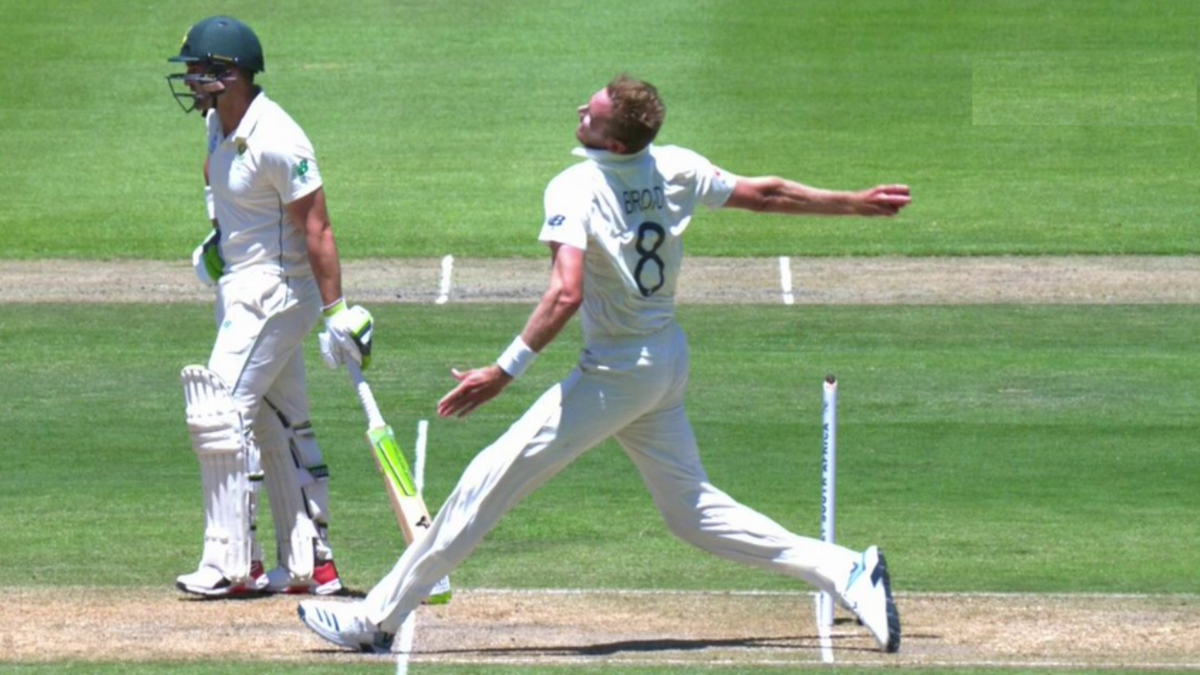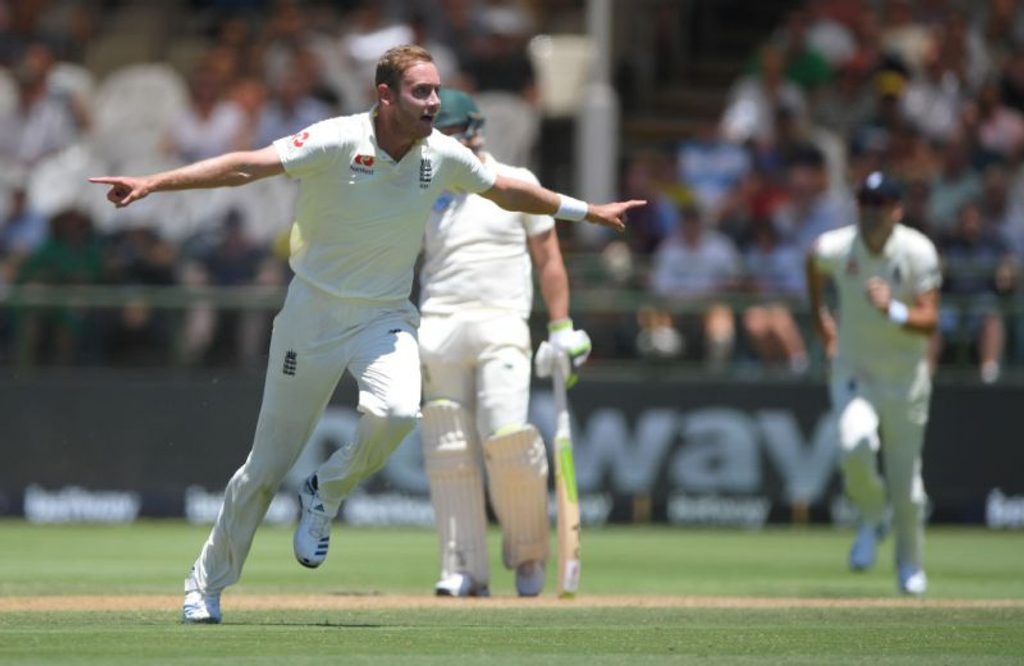
It was the dream dismissal that turned into a nightmare.
Off the third ball of the 27th over of South Africa’s reply to England’s first innings 269, Stuart Broad got a ball to rear up off the pitch, flicking the glove of Rassie van der Dussen on the way through to the keeper, only to have his joy cut short when replays revealed he had overstepped.
“It’s a no-ball,” said Kevin Pietersen on air. “It’s a monster no-ball. The celebration stops. Quinton de Kock sits back down. Rassie van der Dussen gets a life. Great use of technology.”
[caption id=”attachment_133728″ align=”alignnone” width=”800″] Stuart Broad’s celebrations were cut short after replays revealed he had bowled a no-ball[/caption]
Stuart Broad’s celebrations were cut short after replays revealed he had bowled a no-ball[/caption]
It had been coming in more ways than one, with Broad in the midst of a fierce spell, and his fellow bowlers having pushed the line without being called. During the previous over, bowled by Sam Curran, Pietersen had highlighted an unnoticed overstep, and pointed to a solution of the TV umpire calling every front-foot no-ball which, as yet, has not been enforced globally by the ICC.
“If you have a look at the side-on of the previous delivery, and you have a look at Sam Curran’s front foot, that there is a no-ball. And what that does for a bowler is that a bowler then has to start thinking about his run-up.
“I called a series in India only a couple of weeks ago. It was India vs the West Indies. And they had the new technology where the umpires were only concentrating on the batsmen and the third umpire was calling no-balls. I just think it has to be at every single ground. The umpire has to concentrate solely on what’s happening at the other end. The cameras are there. I just think that they need to be universally engaged. It was used brilliantly in that T20 series in India. It did solve a few issues. The correct decision was made, the no-balls were called.”
[breakout id=”2″][/breakout]
Without that technology in place, however, the question remains over whether the on-field umpires should call no-balls as they see them or not. The argument against is that should they err and call a no-ball when the bowler was behind the line, wickets would have to be chalked off due to umpire error. Checking the front foot whenever a wicket falls means that, at least when it comes to the dismissal of a batsman, the correct decision is always reached.
However, if a wicket doesn’t fall, the missed no-balls hurt both teams. Batting sides don’t get the extra run, and gain the psychological advantage of the bowler having something else to think about, while bowlers are not reminded how close they are to overstepping.
“On cue, as we’ve been discussing all of a sudden a no-ball is called,” said Shaun Pollock of the Broad overstep. “Surely, surely the umpire should be calling that in real time? That’s not a line call, that is comfortably over the front line. Technology has got the right decision made.”
[breakout id=”1″][/breakout]
The situation was exacerbated in the following overs as Ben Stokes came into the attack and overstepped repeatedly, with the umpires not calling him out.
“That last ball from Stokes was a no-ball,” said Nasser Hussain. “Massive no-ball and not called. A. How can you not call that a no-ball and B. the ball before the Broad wicket was a no-ball. Broad’s at fault, absolutely, but if an umpire’s not calling it, [as a bowler] you must surely think you’re OK?
“I think bowlers should take the blame. I sat this morning and watched the England boys warm up, and Sam Curran, it was funny because he put a marker down where he wanted the ball to land, and then he bowled no-balls, he was two feet over. That surely not only is a no-ball but it affects your length. If you’re practicing and training your brain to hit a certain length and in a match you’re further back, you are back of a length. The bowlers take the blame but also that first ball from Stokes, that is a foot over and it’s been missed.
[breakout id=”0″][/breakout]
“Our director is saying that’s a no-ball virtually ball after ball. There must be someone else able to do that job. I know the IPL are going to bring it in where the umpire sits there and has a look and presses a button, and Hawkeye are trying to do some auto-no-ball technology, but it’s not fair on the fans that people in the truck can see a no-ball and these guys in the ground, no one’s telling them that Stokes is bowling no-balls.”
It was later revealed that there had been 12 uncalled no-balls since the lunch break, but the only no-ball called was that bowled by Broad that seemed for a second to have dismissed van der Dussen.








